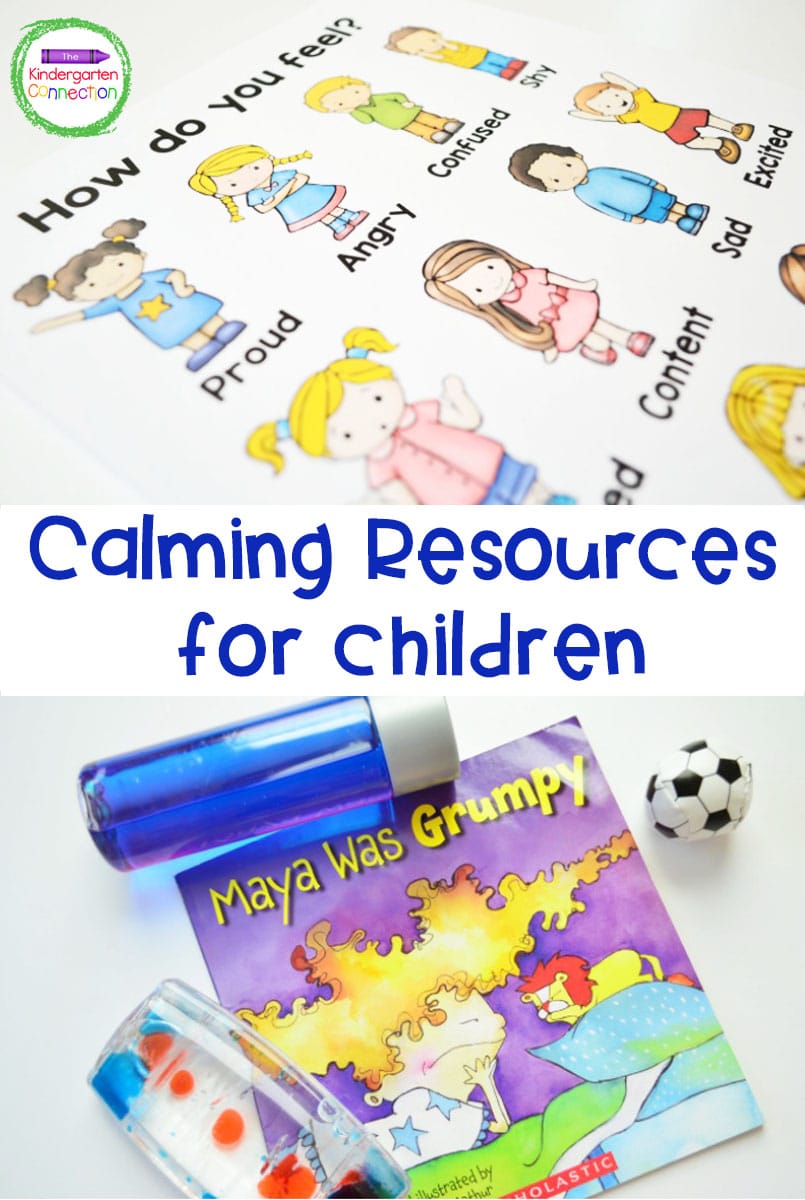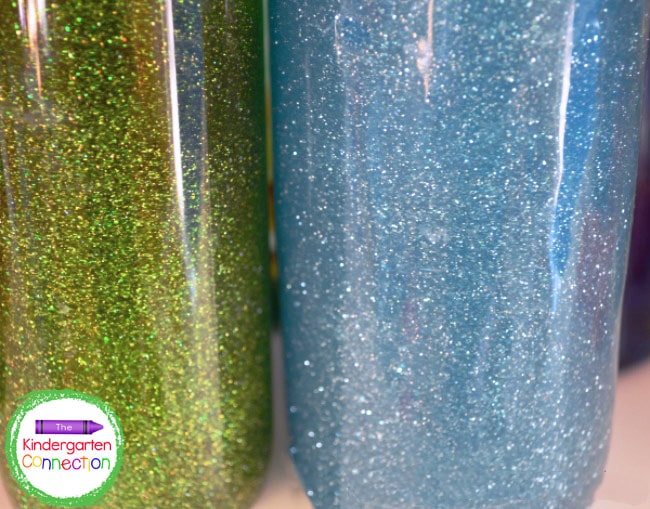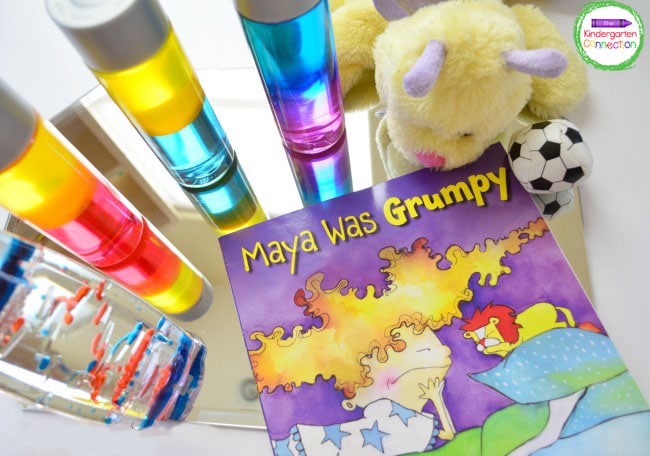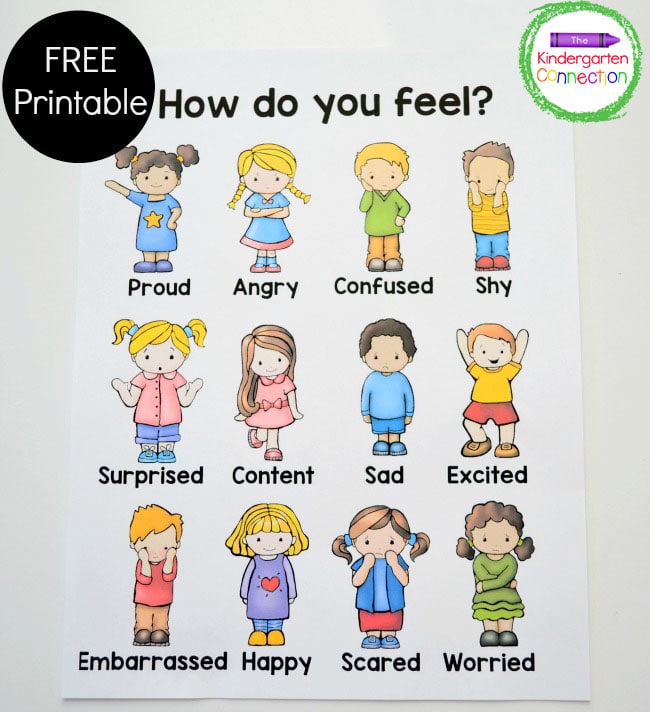It’s one of those moments when you wish you could clone yourself or grow four more arms. A child is having a meltdown, and you have an entire class to take care of at the same time. This is exactly when you could use these calming tools and resources that really work!
*Guest post by Katie from Preschool Inspirations

If you have been in the midst of a meltdown, you know that these can last a long time. I worked alone in my classroom for many of these moments, and I’ve definitely experienced them as a parent too. They can be stressful and overwhelming, especially when you have circle time in two minutes or need to get the children lunch.
I’m going to share my best calming tools and resources to help you get through those moments like a pro! Sensory Processing Disorder, ADHD, Autism, and OCD are all familiar territory for me, and I have happily welcomed all children into my classroom.
Although there are definitely days that I’m ready for my own nap by 3:30 p.m!
These are five of my favorite calming tools and resources for children, and the best part is – they really work!
This is my secret weapon! My classrooms had calm down jars all around – dramatic play, library, a quiet area, and in window sills. You just never know who might want one, and I usually had at least three around in a classroom setting.
Calm down jars are most effective with mildly upset children or in everyday exploration. Once a child becomes familiar with calm down jars, he will find great enjoyment from them. In fact, they can be very therapeutic and are a calming tool used by professional therapists.

There are events in life that can impact a child for days, weeks, or longer. We won’t always have the right words to say, and many times as a teacher, I don’t even know what is going on. So when I see a child who seems upset, or in a funk, or just not themselves, I’ll suggest a calm down jar (which we call the glitter bottle).
I would say that 90% of the time the child will take it, and it really does help!
Calm down jars help for a number of reasons. This particular calming tool helps children (and adults) start taking deep breaths. You don’t even have to mention breathing to them – it happens automatically and naturally.
They can help when a child experiences what I call a “traffic jam” in the brain. It kind of gives a nice little restart.
And it’s just mesmerizing. Grab one on a busy day. You’ll completely understand what I mean.
To make a calm down jar, here’s a detailed tutorial that gives six different options from Preschool Inspirations.
So many times when I have had a child with severe anxiety, I’ll say “just breathe.” I’ll say it again… and again. The words “just breathe” don’t mean a whole lot to a child who is overwhelmed or overstimulated. I really wish it was that easy though!
Instead, give children a visual of how to do this!
This calming tool was given to me by some wonderful mental health professionals that adopted my class one year, and it works amazingly well.
Tell children to pretend like they are blowing out a candle. Blow that pretend candle out with them, so that they can see what their face should mimic. This helps immensely!
Then tell them to pretend to smell a flower. Take in a great big inhale as you are showing them how to smell that amazingly fragrant flower.
It’s incredible how these simple phrases and demonstrations make such a huge difference.
Set aside a spot where children can “have space.” There are times throughout the day where a child just needs a quiet place to decompress, to work through feelings, or to regroup. They may not be ready to talk about what they are feeling, or perhaps a friend is causing them anxiety.
This calming tool is simply a space. It is a voluntary area where a child can safely work through emotions.

Here are some items to have in a calming corner:
Once you have a calming corner, you’ll never want to go without one. Even if you have almost no space, you can set up something simple such as a comfy chair with some of these objects.
It’s amazing how when a child is completely upset, the words “that’s really hard” from an empathetic and understanding adult will almost instantly help a child begin the calm down process.
While reading the book, The Whole-Brain Child, I learned the importance of identifying with the child’s emotions. This helps unlock what I referred to above as the “traffic jam” that is happening in the brain. It’s as simple as narrating what happened. “I saw you fall down and scrape your knee. Your knee really hurts, and you are crying. I am here to help you now.”
When we are empathetic to an upset child, we are able to help them navigate through the muddled emotions that restrict their ability to think logically. Once a child is able to get through those emotions, that is when we see them start to use the reasoning in their higher level, logical part of the brain.
Sometimes it’s hard to know what to say or to help a child work through their emotions. For help on this, I highly recommend reading 13 Helpful Phrases You Can Say to Calm an Anxious Child from Lemon Lime Adventures.
Children are not always sure of the feelings that are building up in them. Feelings are complicated and even as adults it can be hard to know what exactly we are experiencing. Sometimes excitement can also become anxiousness before a big event.
My own daughter loves going to amusement parks and will get in line for a ride that looks amazing. Then once we are at the front of the line and ready to get on, she freezes. She is scared and paralyzed, and the only place we are going is far away.

I found that having a place for children to see what emotions are and to be able to talk about them and the differences among them are very helpful. In fact, I’ve made this emotions chart for you to print off and use. It pairs nicely with our emotions emergent reader.
Helping an anxious child can be extremely challenging! Even more challenging is finding the right calming tools and resources that really work. Hopefully these will help in those moments when you wish you could make another helpful adult magically appear or when you are feeling overwhelmed!
Your planning will be so much easier with instant access to:
Be sure to request an invitation so that you don’t miss your chance to be part of the best early childhood club around!

8 Responses
This is great material! Where is the link to the printable “I can calm down by” bubbles?
Hi Gabriela,
This article includes a free printable emotions chart and emergent reader. They are both bolded and linked below the large image of the emotions chart near the bottom of the post. Hope you have a great day! 🙂
Yes! I’m trying to find that same resource as well!
Hi Jasmine,
This article includes a free printable emotions chart and emergent reader. You can find them both bolded and linked below the large image of the emotions chart near the bottom of the post. 🙂
Thank you so much for sharing this! I love it.
We are so happy you like the resources! Have fun!
Thanks for sharing.
Katie,
Hi,I have enjoyed reading your blog. When I saw your picture,I could sense you are exactly perfect for me to follow your ideas,and your tender ways of teaching
Thank you,